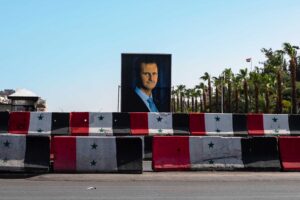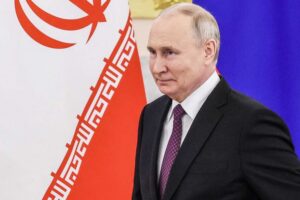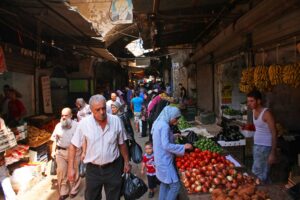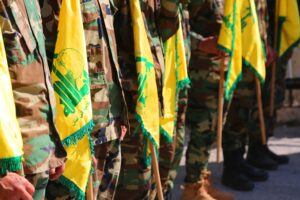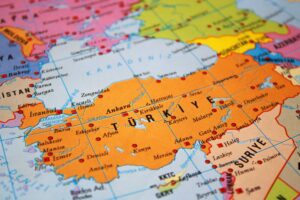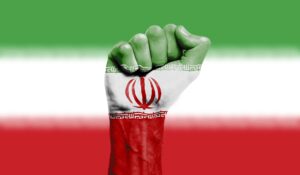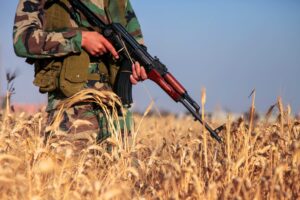The devastating earthquake that struck Turkey and Syria on 6th February has prompted a litany of policy debates surrounding the state of humanitarianism today.[i] As humanitarian actors in and around Syria harden their stances on Syrian President Bashar al-Assad and his Damascus regime, temporary but crucial decisions to respond to the quake are laying the groundwork for new diplomatic initiatives that have the potential of drastically improving humanitarian access on the ground in the long term.
Sanctions Waivers and Their Limits
Organisations suffer from sanctions-related de-risking policies implemented by financial institutions.
Washington’s release of General License No. 23, a relatively simple sanctions waiver, marks the first of two major decisions that have emerged in the aftermath of the earthquake.[ii] The license states that “all transactions related to earthquake relief efforts in Syria that would otherwise be prohibited by the Syrian Sanctions Regulations (SySR[iii]), 31 CFR part 542, are authorized [for six months].” Sanctions on “petroleum or petroleum products of Syrian origin,” are excluded alongside transactions involving directly sanctioned individuals and companies with close ties to the regime.
Dr. Karam Shaar, Non-Resident Scholar at the Middle East Institute, describes the new license as one that “allows transactions relating to the response for the earthquake from the US and other countries.” The Society for Worldwide Interbank Financial Telecommunication (SWIFT) system is particularly important in this regard, as all transactions through western financial institutions use this messaging system to securely transmit information and transaction instructions. Thus, through the license, US policymakers intend to inform private institutions “[not to] worry about sanctions on Syria so long as the transaction doesn’t clearly state that it’s going to an already sanctioned person or entity, or Syrian oil exports.”[iv] This is crucial given most major banks utilize the SWIFT system.
The license likely comes in response to heavy criticisms of Western-backed sanctions, in which the United States is a leading player alongside European powers and the European Union (EU).[v] Indeed, a long-running criticism of the SySR involves the issue[vi] of remittances[vii] and other financial flows[viii] for private businesses and civil society organisations, including local humanitarian actors with fewer resources to navigate increasingly complicated financial rules and regulations. These organizations suffer from sanctions-related de-risking policies implemented by financial institutions while sanctions on the Central Bank of Syria worsen the situation.[ix]
Shaar explicitly pointed out that the license’s impact could be hampered by the unwillingness of financial institutions to engage in potentially risky transactions: “OFAC [Office of Foreign Assets Control] permitting these transactions does not mean that private entities will take advantage of it. So, for a private institution such as PayPal, Syria is still a sanctioned country.”[x] Certain private entities may wish to avoid any potential complications from existing sanctions, “no matter how small.”[xi] “This chilling effect might continue with the general license,” Shaar warned.[xii]
Widespread humanitarian access issues are ultimately worsened by second and third order effects of the conflict in Syria.
Indeed, while the sanctions waiver presents an opportunity to address some of the negative impacts of sanctions, it does not allay concerns about ongoing challenges to humanitarian access across Syria, nor ongoing de-risking.[xiii] Furthermore, it does not address the shortcomings of the international response[xiv] in northwest Syria (NWS). The lack of rescue equipment following the quake is a prime example, as the SySR block a substantial amount of heavy equipment and machine parts from being imported to the country.[xv] UN agencies’ inability to source enough fuel for operations, are also a result of sanctions.[xvi] Thus, widespread humanitarian access issues are ultimately worsened by second and third order effects of the conflict in Syria.
Importantly, humanitarian access issues span the whole of Syria, albeit for slightly different reasons. Syria researcher Suhail al-Ghazi defined the international response to support NWS as a poor “reaction”, given its abject failure in the days following the earthquake. “[The reaction] didn’t involve any support to remove rubble and save civilians trapped under the collapsed buildings. It only included food aid, medical supplies, and tents for internally displaced people [IDPs]. There are no plans for building IDP camps or at least mobile clinics.”[xvii]
“But the regime from the first moment got at least 4,000 tons of various aid including heavy machinery, food, and medical supplies, as well as doctors and rescue teams. The gap between both [regime and non-regime] areas is huge and speaks volumes of the UN and international community failure”, adds al-Ghazi.[xviii] Indeed, NWS was left[xix] to fend for itself[xx] for days following the disaster. The presence of Hay’at Tahrir al-Sham (HTS) in much of Idlib and NWS likely contributed to such delays. This group has rejected crossline aid from Damascus, describing aid from the regime as a propaganda tool.
Border crossings
The international community has since rightly called for more open access to areas affected by the earthquake via other border crossings between Syria and Turkey.[xxi] Only the Bab al-Hawa crossing was operational in the area until 13th February, when the Assad regime announced that it would allow two additional border crossings at Bab al-Salam and Al Ra’ee to open for 3 months.[xxii] This marks the second major decision following the earthquake and carries serious implications for the future.
Regardless of propaganda and political gamesmanship, the decision to open additional crossings is a good outcome.
The decision to temporarily open additional crossings is surprising considering the murderous brutality of Damascus[xxiii] over the last 12 years, indeed over the past few decades going back to the Hama massacres in the 1980s.[xxiv] Although the move is likely a propaganda ploy, especially in the context of Assad’s efforts to bring his government back into the international fold, the decision itself does not exist within a vacuum.[xxv] Rather, it and the sanctions waiver present opportunities to address broader humanitarian access and metric problems in Syria.
This is particularly true in the case of the border crossings. Regardless of propaganda[xxvi] and political gamesmanship,[xxvii] the decision to open additional crossings is a good outcome for humanitarian efforts. It presents those who support the cross-border mechanism with an opportunity to press for an indefinite extension of the renewed crossings at the United Nations Security Council (UNSC).
While Deputy Ambassador of Russia to the UN Dmitry Polyanskiy argued that Russia only supports additional crossings as a temporary measure, “because it’s a sovereign decision of Syria,” the Assad camp is in a bind.[xxviii] As a group of 16 prominent international jurists noted in a recent letter, the cross-border mechanism does not require UNSC authorization given the circumstances in Syria.[xxix] In this letter, the experts note that arguments against the cross-border mechanism are moot and legally dubious as a result of Syria’s signing of the Geneva Conventions of 1949, alongside previous rulings from the International Court of Justice which declare that humanitarian aid to any persons or forces in another country cannot be viewed as an unlawful intervention contrary to international law.[xxx] If anything, the regime’s denial of aid to areas outside of Damascus’s control violates international law and discriminates against entire populations on the basis of their political affiliation or location.
If Russia vetoes the measure in a similar fashion to previous cross-border authorization votes at the UNSC,[xxxi] those supportive of cross-border aid will be presented with the opportunity to take a path outside of the UNSC. Specifically, this means matching aid with need, recognizing shortcomings in both monitoring and access to politically sensitive areas like Idlib, and reconceptualizing an approach around prevention that promotes resilience to external and internal shocks in the future.
The Future of Humanitarian Access Under Sanctions
A broader recalibration of sanctions that takes into consideration long-term impact on both government and civilians should accompany the above efforts. On the one hand, highly targeted sanctions against regime officials who have committed egregious crimes against the Syrian people are, of course, justified. However, they often lead to adverse effects such as the deepening of organised crime.[xxxii] This is evident in Syria[xxxiii] where sanctions have largely failed to impose real limitations on regime-allied elites while perpetuating a narco-state that has diverted[xxxiv] funds from social spending towards military endeavours and cronyism to prop up the regime.[xxxv]
Holding Assad accountable while removing impediments to humanitarian access across Syria must be pursued.
On the other hand, limiting financial flows in ways that block or delay[xxxvi] remittances[xxxvii] and invite financial de-risking[xxxviii] reflect negatively[xxxix] on general economic activity,[xl] the Syrian pound, as well as early recovery projects as a direct result.[xli] Such effects harm the average Syrian, regardless of regime actions, by lowering the economic resilience of the Syrian population as a whole.
The Biden administration should monitor how the Assad regime takes advantage of the sanctions waiver as well as honour its 2021 sanctions review with respect to the SySR.[xlii] This review centralises human rights considerations within the broader sanctions policy of the US government, aiming to prevent unintended negative consequences of said measures on civilians.
In regime-controlled areas, this review should first examine sector-wide sanctions. This mostly relates to the construction and energy sectors, where sanctions have prevented Syria’s early recovery, particularly with respect to rebuilding critical infrastructure.[xliii] Whilst these sanctions have had a substantially negative impact on Syria’s resilience to environmental threats such as the recent earthquake and the ongoing cholera outbreak, they have done little to change political dynamics on the ground.[xliv] That said, any revision to sanctions policies in these areas must be accompanied by comprehensive monitoring mechanisms to prevent the regime from diverting and[xlv] stealing aid[xlvi], as well as manipulating the currency[xlvii] to profit from aid flows. Experts such as Shaar have presented[xlviii] potential solutions[xlix] that promote adjustments to sector-wide sanctions.
Al-Ghazi does not believe this type of change will come about in the sanctions regime anytime soon due to broader regional dynamics. He argues that “any [measure] related to early recovery projects and oil sanctions will not be reduced or removed because it serves US policy regarding Iran’s involvement in Syria.”[l] He notes that this line of reasoning also applies to calculations behind European sanctions.[li]
Ultimately, humanitarian principles dictate that aid should not be politicized in any way, shape, or form. While it is right to hold Assad and his cronies accountable, it is also necessary to ensure that no harm befalls innocent people. Supporting a de-politicized humanitarian mission in Syria is not a black and white endeavor, but opportunities for holding Assad accountable while removing impediments to humanitarian access across Syria must be pursued.
[i] Ali Kucukgocmen. “Earthquake death toll surpasses 50,000 in Turkey and Syria.” Reuters. February 24, 2023. https://www.reuters.com/world/middle-east/earthquake-death-toll-surpasses-50000-turkey-syria-2023-02-24/.
[ii] “Syrian Sanctions Regulations 31 CFR part 542 GENERAL LICENSE NO. 23 Authorizing Transactions Related to Earthquake Relief Efforts in Syria.” US Department of the Treasury, Office of Foreign Assets Control. February 9, 2023. https://home.treasury.gov/system/files/126/syria_gl23.pdf.
[iii] “Syria Sanctions.” US Department of State. https://www.state.gov/syria-sanctions/.
[iv] Interview with Dr. Karam Shaar. February 13, 2023.
[v] “Syria slams US sanctions for ‘exacerbating disaster’ after earthquake.” Middle East Monitor. February 9, 2023. https://www.middleeastmonitor.com/20230208-syria-slams-us-sanctions-for-exacerbating-disaster-after-earthquake/.
[vi] “U.S. Sanctions on Syria: What Comes Next?” International Crisis Group. July 13, 2020. https://www.crisisgroup.org/middle-east-north-africa/eastern-mediterranean/syria/us-sanctions-syria-what-comes-next.
[vii] Erica Moret. “A lifeline under threat? Syrian household remittances in light of sanctions, financial sector de-risking, COVID-19, and regional developments.” United Nations Economic and Social Commission for Western Asia. September 2022. https://nafsprogramme.info/resource/publications/lifeline-under-threat-syrian-household-remittances-light-sanctions-financial.
[viii] Daher, Joseph and Erica Moret. “Invisible Sanctions: How over-compliance limits humanitarian work on Syria.” IMPACT Civil Society Research and Development. 2020. https://impact-csrd.org/reports/Invisible_Sanctions_IMPACT_EN.pdf.
[ix] Stafford Powell, Alison, Kim Shin, Eunkyung and Andrea Tovar. “US Government Designates the Central Bank of Syria and High-Ranking Officials in the Syrian Government and Issues Related FAQs.” Sanctions News. January 5, 2021. https://sanctionsnews.bakermckenzie.com/us-government-designates-the-central-bank-of-syria-and-high-ranking-officials-in-the-syrian-government-and-issues-related-faqs/.
[x] Interview with Dr. Karam Shaar. February 13, 2023.
[xi] Ibid.
[xii] Ibid.
[xiii] Daniel Aron. “The Challenges of Transferring Money in Syria.” Development Markets. https://www.developingmarkets.com/perspectives/challenges-transferring-money-syria.
[xiv] Ibrahim Hamidi. “The orphaned Syrian suffering.” Al Majalla. February 13, 2023. https://en.majalla.com/node/286256/opinion/orphaned-syrian-suffering%C2%A0.
[xv] “Syria: 35 INGO and Syrian NGOs demanding unfettered access and massive scale-up of humanitarian response.” CARE International. February 15, 2023. https://www.care-international.org/news/syria-35-ingo-and-syrian-ngos-demanding-unfettered-access-and-massive-scale-humanitarian.
[xvi] “Syrian Arab Republic – Fuel Crisis in Syria (As of 15 January 2023).” United Nations Office for the Coordination of Humanitarian Affairs. January 15, 2023. https://reliefweb.int/report/syrian-arab-republic/syrian-arab-republic-fuel-crisis-syria-15-january-2023.
[xvii] Interview with Suhail al-Ghazi. February 17, 2023.
[xviii] Ibid.
[xix] Muhammad Idrees Ahmad.” Syria’s Silent Rubble Reproaches the UN.” New Lines Magazine. February 15, 2023. https://newlinesmag.com/spotlight/syrias-silent-rubble-reproaches-the-uns-resounding-failure/.
[xx] Tessa Fox. “The Slow UN Earthquake Response in Northwest Syria is Costing Lives.” New Lines Magazine. February 10, 2023. https://newlinesmag.com/spotlight/slow-un-earthquake-response-to-northwest-syria-is-costing-lives/.
[xxi] Patrick Wintour. “Calls to ease Syrian border controls as offers of aid pour in after earthquake.” The Guardian. February 6, 2023. https://www.theguardian.com/world/2023/feb/06/calls-to-ease-syrian-border-controls-as-offers-of-aid-pour-in-after-earthquake
[xxii] Michelle Nichols. “UN chief says Syria’s Assad agrees to expand UN aid access from Turkey.” Reuters. February 13, 2023. https://www.reuters.com/world/middle-east/un-chief-says-syrias-assad-agrees-expand-un-aid-access-turkey-2023-02-13/.
[xxiii] “Syria: ‘Surrender or starve’ strategy displacing thousands amounts to crimes against humanity.” Amnesty International. November 13, 2017. https://www.amnesty.org/en/latest/press-release/2017/11/syria-surrender-or-starve-strategy-displacing-thousands-amounts-to-crimes-against-humanity/.
[xxiv] Bill Rugh. “Syria: The Hama Massacre.” Middle East Policy Council. https://mepc.org/commentary/syria-hama-massacre.
[xxv] Giorgio Cafiero. “Advocating for Assad: The Effects of Warming UAE-Syria Ties on Emirati American Relations.” Gulf International Forum. April 2, 2022. https://gulfif.org/advocating-for-assad-the-effects-of-warming-uae-syria-ties-on-emirati-american-relations/.
[xxvi] Timour Azhari. “Syria’s Assad visits Aleppo hospital in first reported trip to quake-hit area.” Reuters. February 10, 2023. https://www.reuters.com/world/asia-pacific/syrias-assad-visits-aleppo-hospital-first-reported-trip-quake-hit-area-2023-02-10/.
[xxvii] Farnaz Fassihi. “Syria’s President Agrees to 2 More Border Crossings for Quake Aid.” New York Times. February 13, 2023. https://www.nytimes.com/2023/02/13/world/middleeast/earthquake-syria-aid-un.html.
[xxviii] “Syria’s Assad allows UN aid to go through two new border crossings.” Al Arabiya News via Reuters. February 9, 2023. https://english.alarabiya.net/News/middle-east/2023/02/14/Syria-s-Assad-allows-UN-aid-to-go-through-two-new-border-crossings.
[xxix] “There is Still No Legal Barrier to UN Cross-Border Operations in Syria Without a UN Security Council Mandate.” Cross Border is Legal. February 10, 2023. https://www.crossborderislegal.org/_files/ugd/166212_a14558496a1242d28fb13a5aea08f26c.pdf.
[xxx] “The Geneva Conventions and their Commentaries.” International Committee of the Red Cross. https://www.icrc.org/en/war-and-law/treaties-customary-law/geneva-conventions#:~:text=The%20Geneva%20Conventions%20and%20their%20Additional%20Protocols%20form%20the%20core,are%20no%20longer%20doing%20so.
[xxxi] Natasha Hall. “The Implications of the UN Cross-Border Vote in Syria.” Center for Strategic and International Studies. June 4, 2021. https://www.csis.org/analysis/implications-un-cross-border-vote-syria.
[xxxii] Peter Andreas. “Criminalizing Consequences of Sanctions: Embargo Busting and Its Legacy.” International Studies Quarterly. June 2005. https://www.jstor.org/stable/3693517.
[xxxiii] Shaar, Karam and Said Dimashqi. “US sanctions on Syria aren’t working. It’s time for a new sanctions approach that minimizes humanitarian suffering and increases leverage.” Atlantic Council MENASource. January 13, 2023. https://www.atlanticcouncil.org/blogs/menasource/us-sanctions-on-syria-arent-working-its-time-for-a-new-sanctions-approach-that-minimizes-humanitarian-suffering-and-increases-leverage/.
[xxxiv] “Syria approves $5.3bn budget for 2022 as economic crisis hits finances.” Middle East Eye. December 15, 2021. https://www.middleeasteye.net/news/syria-approves-53-bn-budget-2022-economic-crisis-hits-finances.
[xxxv] Haid Haid. “Nothing to celebrate in Syria’s new budget.” Asia Times. January 13, 2023. https://asiatimes.com/2023/01/nothing-to-celebrate-in-syrias-new-budget/.
[xxxvi] Lily Jamali. “It’s hard to send earthquake relief remittances to Syria.” Marketplace. February 13, 2023. https://www.marketplace.org/2023/02/13/its-hard-to-send-earthquake-relief-remittances-to-syria/.
[xxxvii] “Genuine solidarity with earthquake survivors calls for lifting of sanction-induced restrictions: UN experts.” United Nations Human Rights Office of the High Commissioner. February 10, 2023. https://www.ohchr.org/en/statements/2023/02/genuine-solidarity-earthquake-survivors-calls-lifting-sanction-induced.
[xxxviii] Gordon, Stuart, Robinson, Alice, Goulding, Harry and Rawaad Mahyub. “The impact of bank de-risking on the humanitarian response to the Syrian crisis.” Overseas Development Institute and Humanitarian Policy Group. August 2018. https://cdn.odi.org/media/documents/12376.pdf.
[xxxix] Martin Chulov. “US ‘Caesar Act’ sanctions could devastate Syria’s flatlining economy.” The Guardian. June 12, 2020. https://www.theguardian.com/world/2020/jun/12/us-caesar-act-sanctions-and-could-devastate-syrias-flatlining-economy.
[xl] Ahlam and Barrett Alexander. “Syria’s Economic Collapse and Its Impact on the Most Vulnerable.” Center for Strategic and International Studies. February 18, 2021. https://www.csis.org/analysis/syrias-economic-collapse-and-its-impact-most-vulnerable.
[xli] “Aid in Limbo: Why Syrians deserve support to rebuild their lives.” Oxfam. March 2019. https://oxfamilibrary.openrepository.com/bitstream/handle/10546/620630/bp-syria-recovery-120319-en.pdf.
[xlii] “The Treasury 2021 Sanctions Review.” US Department of the Treasury. October 2021. https://home.treasury.gov/system/files/136/Treasury-2021-sanctions-review.pdf.
[xliii] “U.S. and European Sanctions on Syria.” The Carter Center. September 2020. https://www.cartercenter.org/resources/pdfs/peace/conflict_resolution/syria-conflict/us-and-european-sanctions-on-syria-091620.pdf.
[xliv] Alexander Langlois. “Syria’s cholera outbreak: Impacts and implications for the conflict and region.” TRENDS Research and Advisory. August 2, 2022. https://trendsresearch.org/insight/syrias-cholera-outbreak-impacts-and-implications-for-the-conflict-and-region/.
[xlv] “Rigging the System: Government Policies Co-Opt Aid and Reconstruction Funding in Syria.” Human Rights Watch. June 28, 2019. https://www.hrw.org/report/2019/06/28/rigging-system/government-policies-co-opt-aid-and-reconstruction-funding-syria.
[xlvi] Natasha Hall. “Rescuing Aid in Syria.” Center for Strategic and International Studies. February 14, 2022. https://www.csis.org/analysis/rescuing-aid-syria.
[xlvii] Natasha Hall. “How the Assad Regime Systematically Diverts Tens of Millions in Aid.” Center for Strategic and International Studies. October 20, 2021. https://www.csis.org/analysis/how-assad-regime-systematically-diverts-tens-millions-aid.
[xlviii] Shaar and Dimashqi. “US sanctions on Syria aren’t working.”
[xlix] Alalwani, Wael and Karam Shaar. “A Comprehensive Review of the Effectiveness of US and EU Sanctions on Syria.” Middle East Institute. August 6, 2021. https://www.mei.edu/publications/comprehensive-review-effectiveness-us-and-eu-sanctions-syria.
[l] Interview with Suhail al-Ghazi. February 17, 2023.
[li] Ibid.




